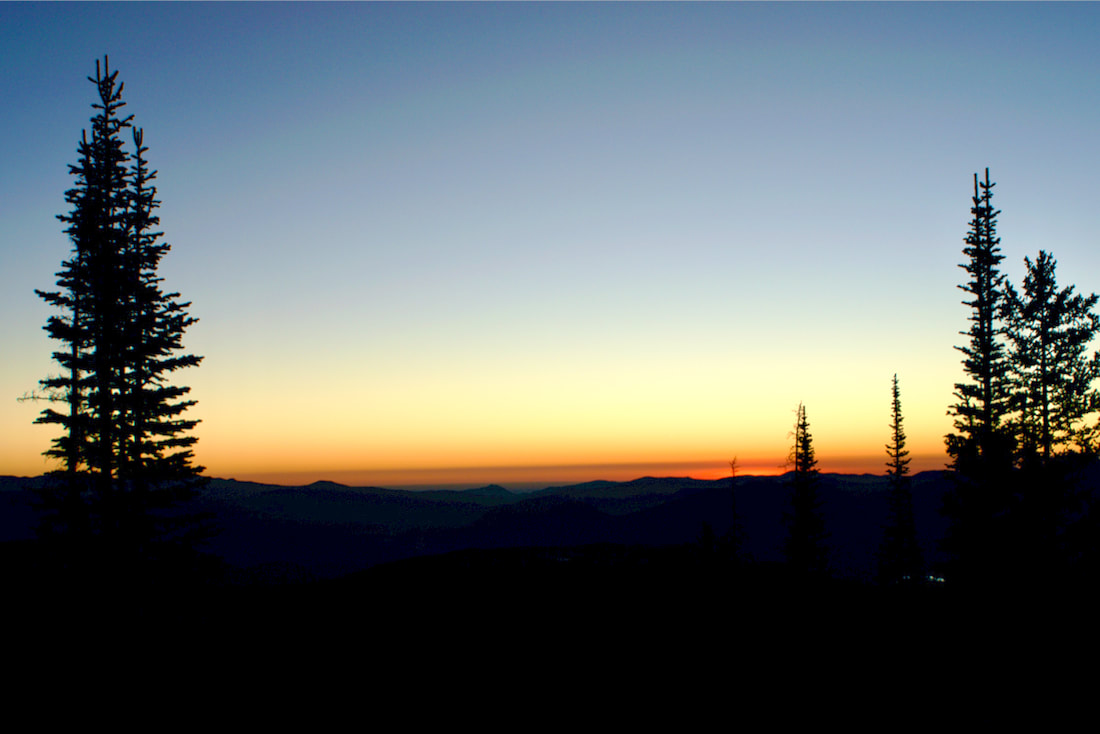|
Notes from the
Trail |
|
Trailhead: Bear Lake Trailhead Elevation: 9,475' Destination Elevation: 13,208' Elevation Gain: 3,733' Roundtrip Miles: 16 This hike was done several weeks ago, on September 2. Before the area received several days of hot, dry winds that blew up the Cameron Peak fire and eventually closed Trail Ridge Road due to heavy smoke conditions. And before the dramatic change in the weather that dropped temperatures by nearly 50 degrees overnight and kept Trail Ridge Road closed for many more days with as much as 16" of snow. Conditions can change very quickly in the mountains. I left the Bear Lake parking in the dark with other hikers wearing headlamps to see their way on the trail. My destination on this day was Powell Peak via the Flattop Mtn trail and across the tundra, rounding the backside of the many peaks that make up The Front Range. Because of the extended amount of time cruising above treeline, it was important that there was a zero percent chance of thunderstorms in the forcast. I started up the Flattop Mtn trail like a race horse out of the starting gate, but then settled into a steady pace as I rose in elevation with the sun.
I worked my way around the western flank of Hallett Peak until I could see Longs Peak and Taylor Peak, two prominent landmarks. I needed to go around Taylor Peak to get to Powell Peak, so I headed for a low spot to the right of Taylor and kept that spot in my sights while I navigated the terrain. After passing Otis Peak, a visible trail appeared that led to the top of Andrews Glacier. I took a peek down to The Loch Vale before continuing on my tundra traverse.
Once I reached the high point on the shoulder of Taylor Peak, I found I was still not far enough around to see my direction to Powell Peak yet. But I was able to see across the valley to the southwest at the dramatic range, with Andrews Peak to the the left and Ptarmigan Mtn to the right, and I could also see the two lakes, Nakoni and Nanita, that sit below them. The actual summit of Powell Peak is hard to make out. It is not as prominent as many of the other surrounding peaks are, especially from the back side. And because of the rising elevations, some things are hidden. I kept an eye on a really prominent peak which at first I thought was neighboring McHenrys Peak. But later I realized that Powell Peak was hiding McHenrys Peak and what I was looking at all along was Chiefs Head Peak. It wasn't until I was on the actual summit of Powell Peak that I realized my error. Right in front of me, sticking up like a sore thumb, was the backside of McHenrys Peak between Longs Peak and Chiefs Head Peak behind it. The topography can be confusing, and very dramatic when trekking across the tundra. At 13,208 ft, Powell Peak is slightly lower than McHenrys Peak by only 19ft, but higher than the more prominent Taylor Peak by 55ft. But the distance to get to Powell Peak is considerable, and I began to make my way back. It took me six hours to reach the summit of Powell Peak from the Bear Lake Parking lot, but only four and a half hours on the return.
0 Comments
Leave a Reply. |
"The wild requires that we learn the terrain, nod to all the plants and animals and birds, ford the streams and cross the ridges, and tell a good story when we get back home." ~ Gary Snyder
Categories
All
“Hiking -I don’t like either the word or the thing. People ought to saunter in the mountains - not hike! Do you know the origin of the word ‘saunter?’ It’s a beautiful word. Away back in the Middle Ages people used to go on pilgrimages to the Holy Land, and when people in the villages through which they passed asked where they were going, they would reply, A la sainte terre,’ ‘To the Holy Land.’ And so they became known as sainte-terre-ers or saunterers. Now these mountains are our Holy Land, and we ought to saunter through them reverently, not ‘hike’ through them.” ~ John Muir |
© Copyright 2025 Barefoot Publications, All Rights Reserved



























